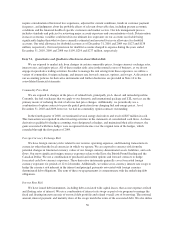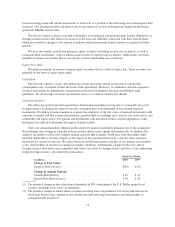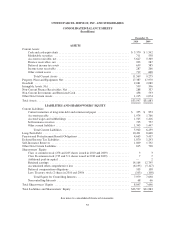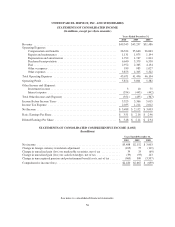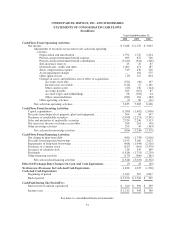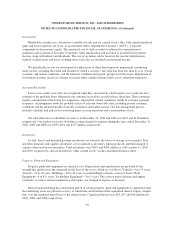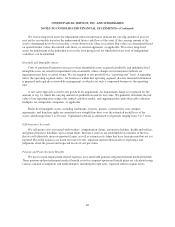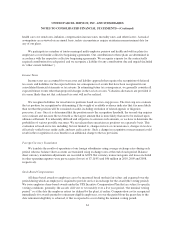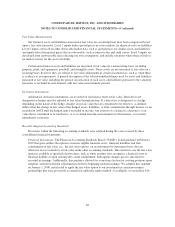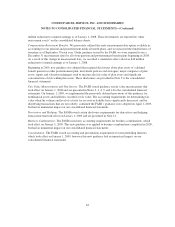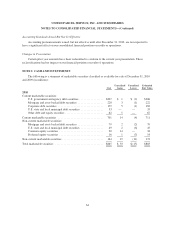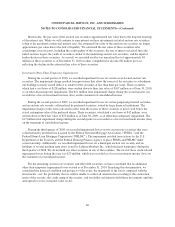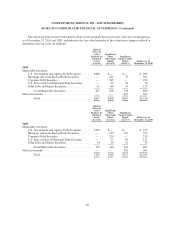UPS 2010 Annual Report Download - page 72
Download and view the complete annual report
Please find page 72 of the 2010 UPS annual report below. You can navigate through the pages in the report by either clicking on the pages listed below, or by using the keyword search tool below to find specific information within the annual report.UNITED PARCEL SERVICE, INC. AND SUBSIDIARIES
NOTES TO CONSOLIDATED FINANCIAL STATEMENTS—(Continued)
We review long-lived assets for impairment when circumstances indicate the carrying amount of an asset
may not be recoverable based on the undiscounted future cash flows of the asset. If the carrying amount of the
asset is determined not to be recoverable, a write-down to fair value is recorded. Fair values are determined based
on quoted market values, discounted cash flows, or external appraisals, as applicable. We review long-lived
assets for impairment at the individual asset or the asset group level for which the lowest level of independent
cash flows can be identified.
Goodwill and Intangible Assets
Costs of purchased businesses in excess of net identifiable assets acquired (goodwill), and indefinite-lived
intangible assets are tested for impairment at least annually, unless changes in circumstances indicate an
impairment may have occurred sooner. We are required to test goodwill on a “reporting unit” basis. A reporting
unit is the operating segment unless, for businesses within that operating segment, discrete financial information
is prepared and regularly reviewed by management, in which case such a component business is the reporting
unit.
A fair value approach is used to test goodwill for impairment. An impairment charge is recognized for the
amount, if any, by which the carrying amount of goodwill exceeds its fair value. We primarily determine the fair
value of our reporting units using a discounted cash flow model, and supplement this with observable valuation
multiples for comparable companies, as applicable.
Finite-lived intangible assets, including trademarks, licenses, patents, customer lists, non-compete
agreements, and franchise rights are amortized on a straight-line basis over the estimated useful lives of the
assets, which range from 2 to 20 years. Capitalized software is amortized over periods ranging from 3 to 5 years.
Self-Insurance Accruals
We self-insure costs associated with workers’ compensation claims, automotive liability, health and welfare,
and general business liabilities, up to certain limits. Insurance reserves are established for estimates of the loss
that we will ultimately incur on reported claims, as well as estimates of claims that have been incurred but not yet
reported. Recorded balances are based on reserve levels, which incorporate historical loss experience and
judgments about the present and expected levels of cost per claim.
Pension and Postretirement Benefits
We incur certain employment-related expenses associated with pension and postretirement medical benefits.
These pension and postretirement medical benefit costs for company-sponsored benefit plans are calculated using
various actuarial assumptions and methodologies, including discount rates, expected returns on plan assets,
60


